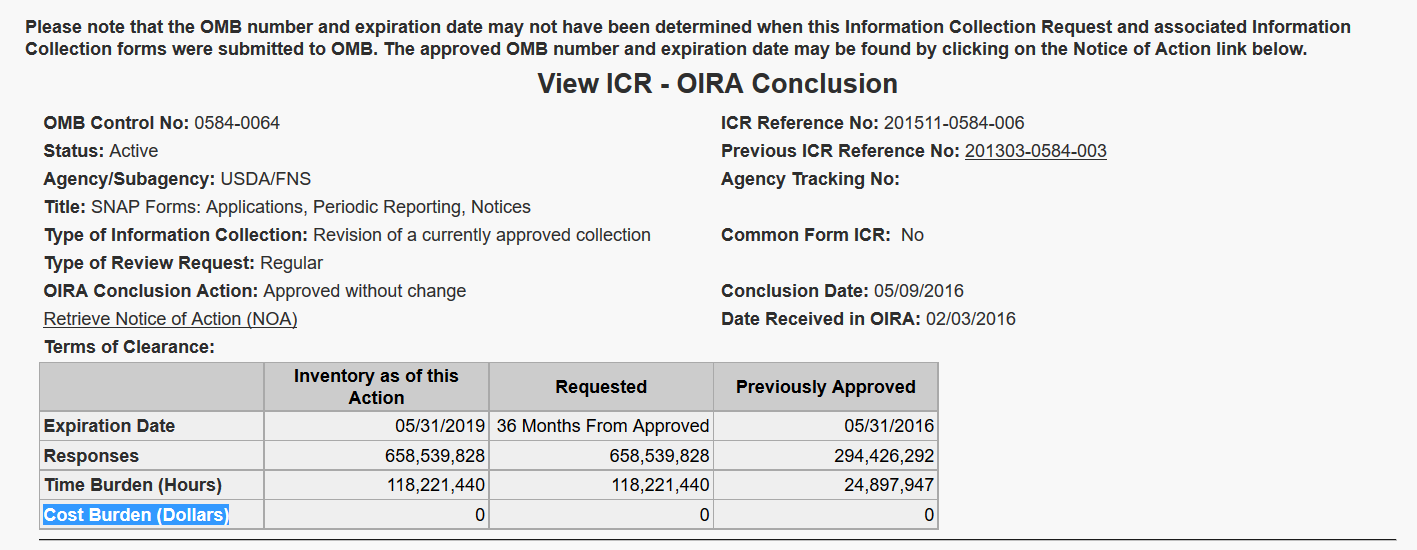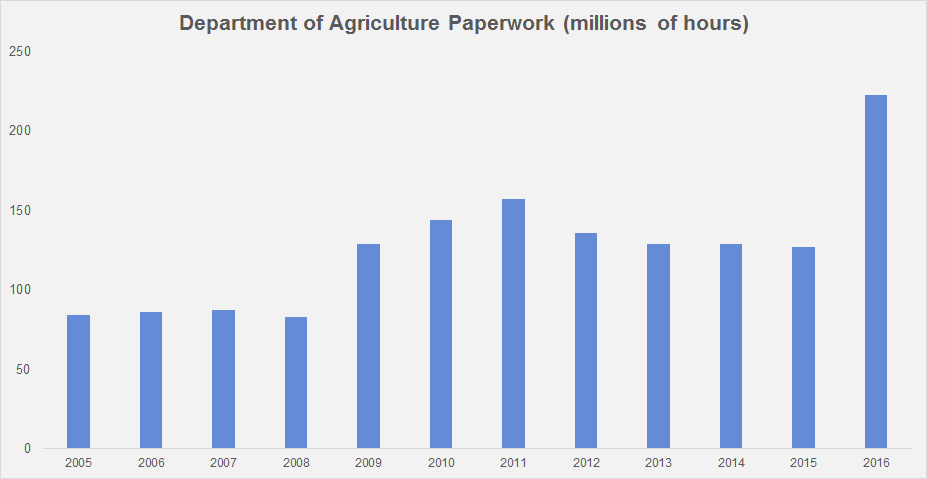Insight
May 26, 2016
What a Rise in Food Stamps Looks Like in Regulation
In early May, the White House approved a routine adjustment to its Supplemental Nutrition Adjustment Program (SNAP) program. It has been well documented that the Great Recession helped to push food stamp recipients to historically high levels. The recent approval of its reporting requirement just led to a paperwork increase of nearly 100 million hours, and a hidden acknowledgement that the regulatory burden from food stamps is $1 billion.
Every week, the White House approves dozens of paperwork and reporting requirements. Many of them go unnoticed by the public and the vast majority are routine. However, the burdens in the latest food stamp approval are profound: 14.6 million Americans will provide 658 million responses to the Department of Agriculture (Ag) annually, and it will cost households, states, and local governments $958 million to comply. The burden specific to the federal government is $356 million.
For some reason this figure isn’t publicly reported on the administration’s website. Instead, it lists the current cost burden as $0.
As shown above, the previous SNAP collection of information imposed just 24 million hours annually, from 294 million responses from Americans. The number of responses increased two-fold and the number of hours increased nearly five-fold because of the revisions. According to the administration, “The number of SNAP participants has increased. We have updated the household data to the most recent available information … to calculate a burden that is based on the most current program participation levels.” This readjustment has led to the reality that the fiscal imposition of the $74 billion program exceeds $1 billion in regulatory costs annually.
Buried on pages 14 and 15 of a supporting document is the acknowledgement that the regulatory cost from food stamps could easily exceed $1 billion and 118 million hours. To put this into perspective, it would take 59,110 employees working full-time (2,000 hours annually) to comply with the required paperwork. In addition, this SNAP program is now 53 percent of Ag’s aggregate paperwork burden. One program alone is now the majority of the agency’s regulatory burden.
Thanks to this revised food stamp requirement, Ag’s paperwork burden reached a historic high. See graph below.
At 222 million hours, Ag’s paperwork burden is now 72 percent higher than the 2008-2015 average. And since 2008, the Obama Administration has more than doubled the agency’s overall paperwork burden, a 168 percent increase.
The regulatory growth at Ag, thanks in large part to rising food stamp regulation, has made the agency the second-fastest rising cabinet agency in the federal government, behind only the Department of Justice. Although the Department of Justice (DOJ) has increased its paperwork burden by 170 percent, this jump must be taken into context; DOJ imposes just 28 million paperwork burden hours, compared to 222 million at Ag. See graph below.
This growth might be explained by the natural evolution at federal agencies and the increased number of SNAP recipients. However, some agencies have actually managed to reduce paperwork burdens. While Ag was growing at a 168 percent clip, the Departments of Energy, Labor, State, and Transportation managed to decrease their paperwork burdens. Clearly, it is possible to reduce reporting and recordkeeping requirements, but not when programs like SNAP impose tremendous impositions on individuals and states.
Conclusion
The costs and growth of the SNAP program might have been well-known, but the regulatory imposition of managing this program was less documented. More than $74 billion in taxpayer money failed to reveal another $1 billion in regulatory burdens and 118 million hours of paperwork. This huge jump from one requirement has vaulted Ag from the ninth most burdensome cabinet agency (by paperwork) to third, behind only Health and Human Services, and the Treasury. By the numbers, Ag went from a regulatory afterthought to one of the most burdensome agencies in the federal government.













